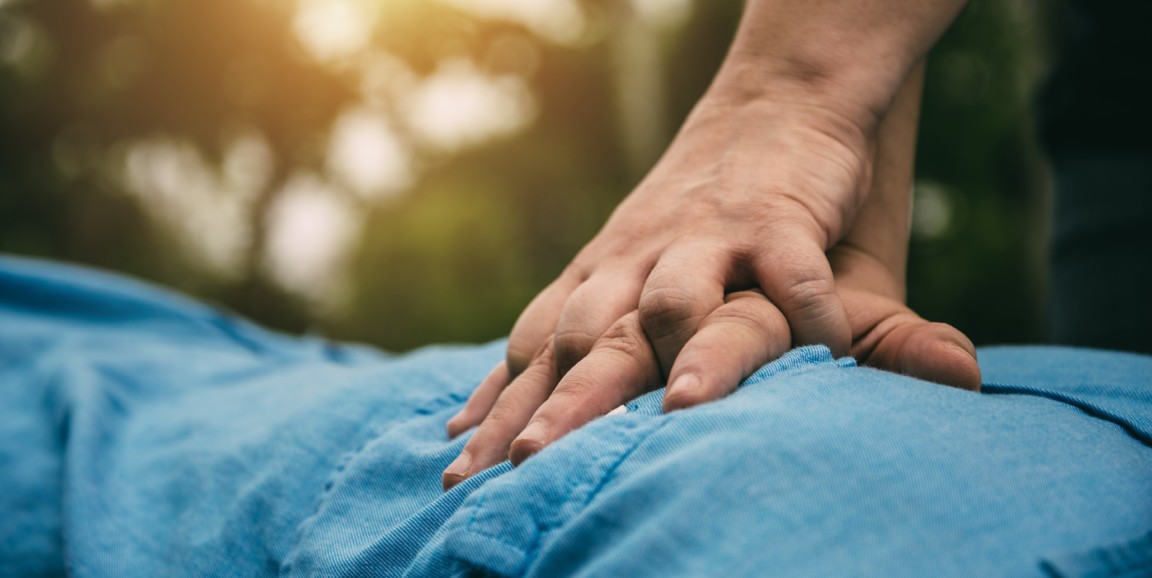"Check it out," my boyfriend said, angling his rash-covered arms in front of the camera. Despite his best precautions, after a day of yard work, he was covered in poison ivy. Over video chat, he showed off the pustules that had erupted on his feet; I cringed. "It's fiiiinne," he said, wincing while putting his socks back on. "I'm glad to know how awful it feels. I've seen a bunch of kids with rashes this week."
As a third-year medical student on the other side of the country, my boyfriend was on his pediatrics rotation. But his attitude about the rash was consistent with a sentiment he's expressed every rotation thus far: wanting to understand exactly how his patients feel. This is where he and I diverge.
In school, he's seized every chance to "be" the patient. He always lets his friends practice exams on him, digging under his ribs to poke his liver or whacking his tendons to elicit reflexes. When working with dietitans, he was offered samples of the liquid meals and contrasts given to hospitalized patients. Despite nearly retching, he tasted each one. In an ideal world, he'd like to know what every procedure or side effect might feel like for the patients he'll one day treat.
I, on the other hand, am a much more reluctant patient. Last year, I laughed every time friends palpated my belly for practice, and I nearly fainted when my roommate gave me my flu shot. Since starting second-year, my classmates and I have even more opportunities to play the patient -- and I've wanted to run for the hills.
Several such opportunities arose during our emergency medicine skills classes. One workshop included the option to practice inserting nasogastric tubes, which run through the nose into the stomach. In another, we placed IVs in each other's arms.
When we ran out of tubes during my session, I felt pure relief. On the day that we placed IVs, I volunteered my veins but had to lie down and look away while sipping a juice box.
Admittedly, I'm squeamish. But setting my phobias aside, these sessions prompted a serious question: Should medical training encourage students to "play" the patient?
I see two possible answers, but usually only hear one: Understanding patients' experiences is at the heart of empathy. In that vein, medical students should get poked, scoped, and maybe even doped whenever safe.
But there's another answer that fewer people acknowledge, that goes against the current of empathy discourse. What if we don't want our clinicians to know exactly how patients feel? What if there's value in creating a little distance between patient and provider?
Take resuscitation as an example. If all clinicians knew how painful emergency procedures like intubation or chest compressions are, is it possible that we might hesitate -- even if only for a split second -- before starting these life-saving interventions?
I've been circling around this topic for a little while now. Last year, while memorizing the muscles in a cadaver and flexing my own as a learning tool, I considered similar questions: How physical should medical training be?
I'm not any closer to offering an answer, but I do have a little more experience to fuel the discussion.
I unexpectedly gained some of that experience this summer, away from school. While working as a reporting intern in Boston, I interviewed two physicians, an oncologist and a pediatrician, who were patients in their specialties first. They both spoke about how their medical histories enable them to sustain compassion and communicate more effectively than their colleagues. For them, the visceral memories of surgeries, radiation, and needlesticks heightened their ability to provide empathetic care.
But not all clinicians have been patients, and it's impossible to experience the full range of what patients feel. I'm not going to undergo unnecessary surgery or take unprescribed medications to embody my patients' discomfort. But reflecting on my interviews from this summer, I would like to make sure I don't pass up any opportunities to "play" the patient just because I'm squeamish or scared. I don't want to miss the small measures I can take to physically relate.
My decision doesn't detract from the fact that there's an important question at hand: Is there a "best practice" for how much medical care students should try, for how much we should feel? For now I can only speak for myself: I'd like to feel more.
So let me know if you need any veins or nasal passages for practice. I might wince, but I promise I won't run away.
Stanford Medicine Unplugged is a forum for students to chronicle their experiences in medical school. The student-penned entries appear on Scope once a week during the academic year; the entire blog series can be found in the Stanford Medicine Unplugged category.
Orly Farber, a second-year medical student, is from Washington, D.C. She graduated from UChicago in 2015 and spent the following two years in an allergy lab at the National Institutes of Health. While Orly's heart remains in Chicago, her body is thrilled to be in the Bay Area! She loves running, hiking, rock climbing, baking bread, and tending to her plants -- fully embracing the West Coast lifestyle.
Photo by Shutterstock




